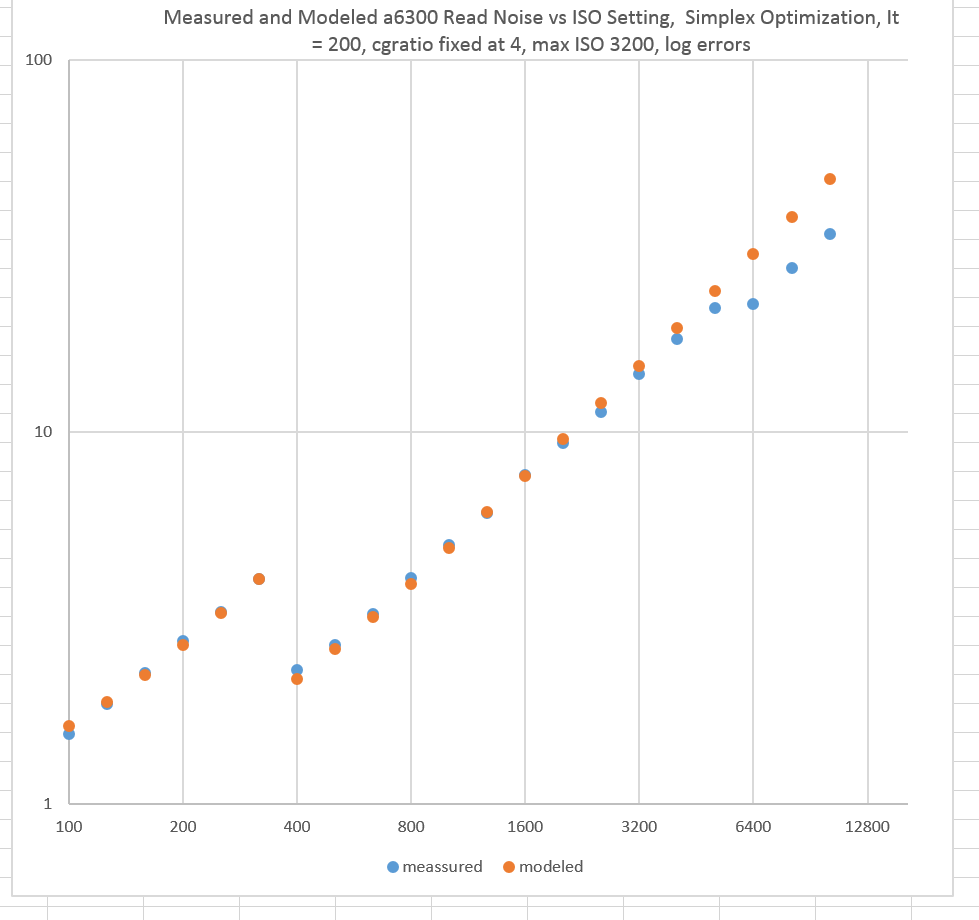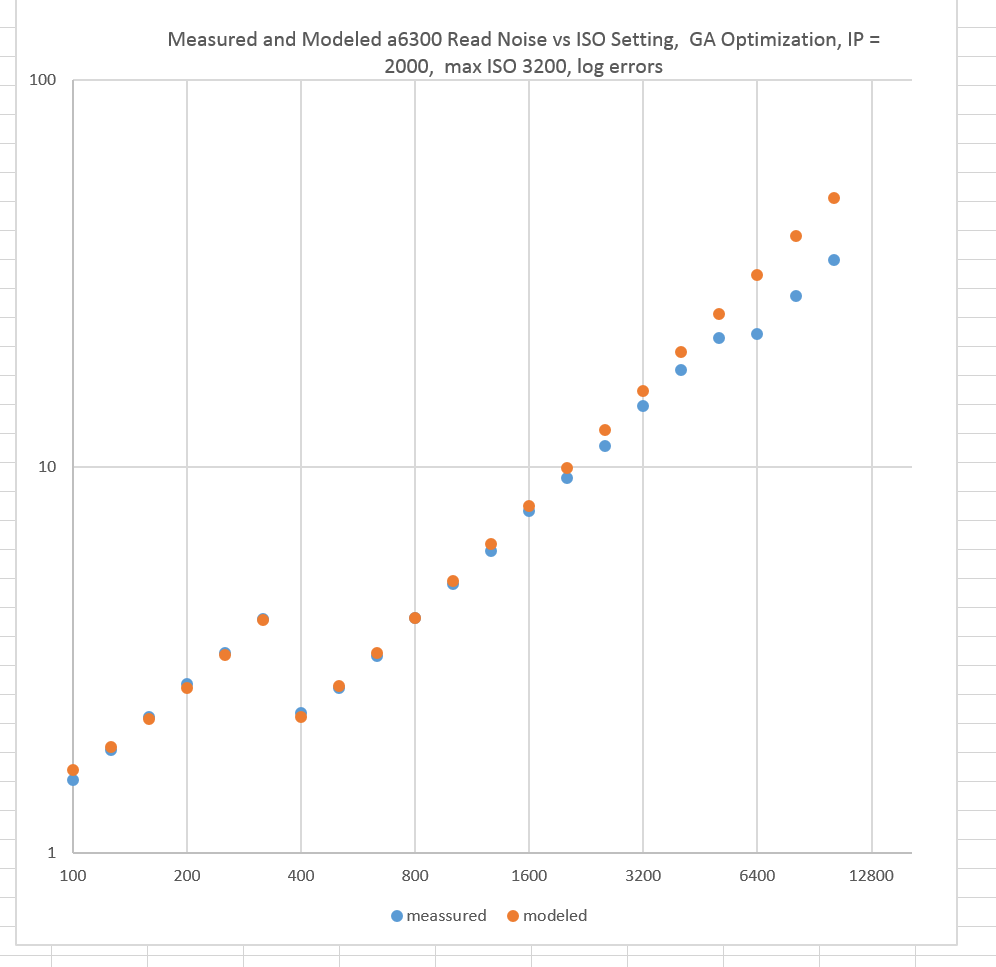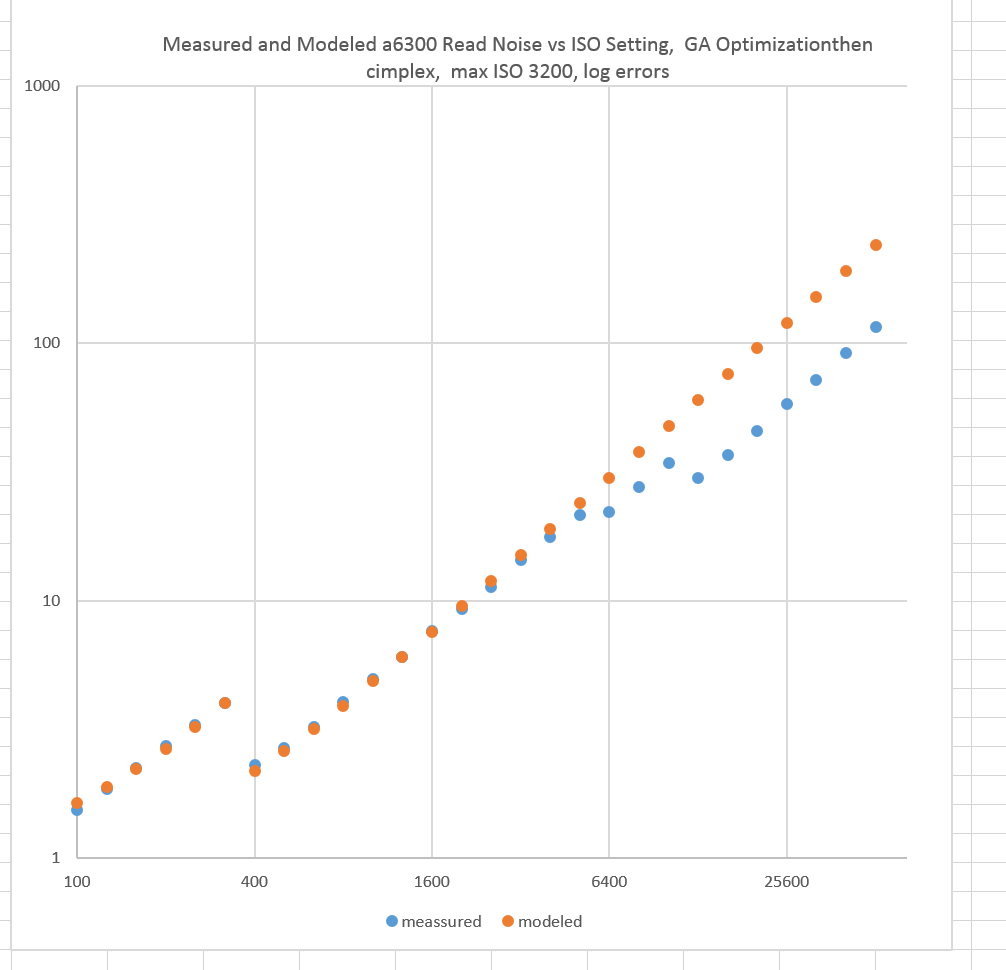This is part of a long series of posts about the Sony a6300. The series starts here.
Warning. This is going to be a nerdy post, even by the standards of this blog. If digital camera design and computer simulation is of no interest to you, step away from the computer; there’s nothing to see here. Seriously, go find something else to read. Come back tomorrow.
OK, who’s still here? Jack, I knew I could count on you. Here we go.
I took some sample images with the a6300 for Bill Claff, using his protocol. He crunched them and got back to me with the full well capacity (FWC): 45000 electrons. With that and my read noise measurements from earlier, I was ready to try to model the read noise of the camera.
Why do you need FWC to model read noise? You don’t, really, but to get the units to what make sense to most people looking at the model, you want to be able to refer to pre ADC read noise in units of electrons. In order to do that from the measurements that I have, you need the gain in electrons per count, of all the amplification before the ADC. That gain is fullscale/FWC, or, for the a6300, 0.361. It doesn’t have to be very accurate, as it just scales the two model parameters that are measured in electrons.
The parameters of my model are:
pixelNoiseElectrons, the noise in the signal to the amplifier with the conversion gain set to the low value. Measured in e-, or electrons.
preAmpNoiseElectrons, the input-referred noise of the gain stages after the conversion gain switching apparatus. Measured in e-. This is kind of a weird parameter, because measuring it in electrons directly is only appropriate up to the ISO where the conversion gain changes. After that, if you want to be precise, to get to electrons you have to divide by the conversionGainMultiplier (see below).
postAmpNoiseCounts, the noise of the ADC and the post-amp noise of the amplifier. Measured in ADC counts, input-referred LSBs, or DN.
conversionGainMultiplier, the gain realized by changing the capacitance associated with the sensor pixel. A unitless number.
There is reason to believe that, since the change in conversion gain first takes effect at ISO 400, and the base ISO is 100, that the conversionGainMultiplier is 4.
I ran a Nelder-Mead simplex search fixing the conversionGainMultiplier at that number, and using sum of squared error of log differences as the function to me minimized. I limited the top ISO under consideration to 3200:
The vertical axis is read noise measured in counts, or LSBs, or (ugh) DNs. Measured data is in blue, and modeled data is in orange. The fit is pretty good up to 3200, but the camera produces better than expected read noise above there. This is below ISO 12800 where I caught the camera doing digital low pass filtering. I think that Sony is cooking the data, but I don’t know how.
Assuming a conversionGainMultiplier of 4 means that the modeled point at ISO 400 is low.
Searching instead with the genetic algorithm, which is not as good at finding the local minimum, but is more tolerant of polymodality than Nelder-Mead simplex, we get this:
The conversionGainMultiplier for that run turned out to be 3.63. That’s probably closer to right for my camera. The absolute error turned out to be slightly higher than the simplex run with conversionGainMultiplier = 4. I started another simplex run where the genetic optimization run above ended did a lttle better, and got these values for the model:
It’s pretty clear that there’s Aptina technology doing the magic with the read noise at ISO 400 and just above. I’t clear that theree’s digital filtering at ISO 12800 and above. What’s not clear is what’s going on just below ISO 10000.
If you want to see just how must the Sony trickery is doing at high ISOs, take a look at what happens with I plot the modeled vs measured all the way up to ISO 50K:




so what ?
Please at least compare the figures with something else (NEX-6, A6000, …).
Thank you
I warned you, but you kept on reading, didn’t you? Neither the NEX-6 nor the a6000 change conversion gain as a function of ISO, so they fit the standard model, and don’t need all this sleuthing.
The take home for the non-technical is that the conversion gain switching works great and lets the a6300 punch above its weight at ISO 400 to about 6400. Above that, the departures from modeled behavior indicate raw cooking.
Jim
clear.
thanks
I am thinking aloud and giving Sony the benefit of the doubt: how could the pixel be slightly reconfigured at ISO6400 to show that small improvement?